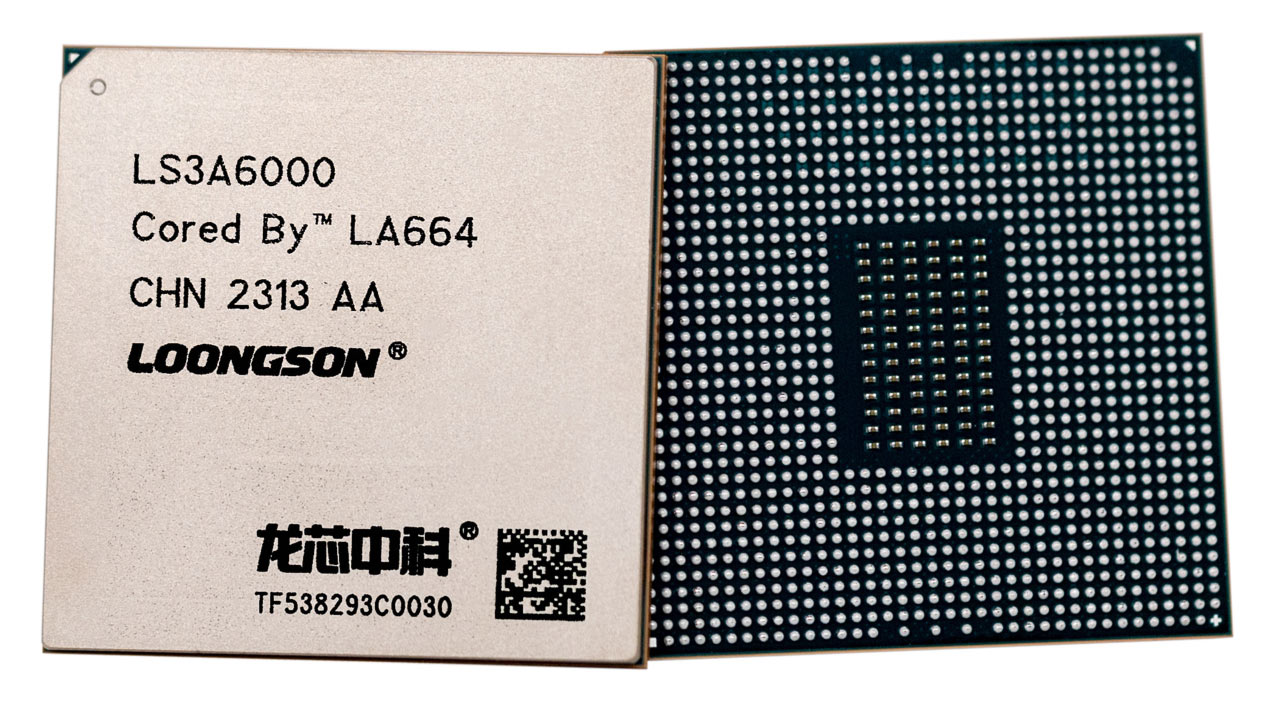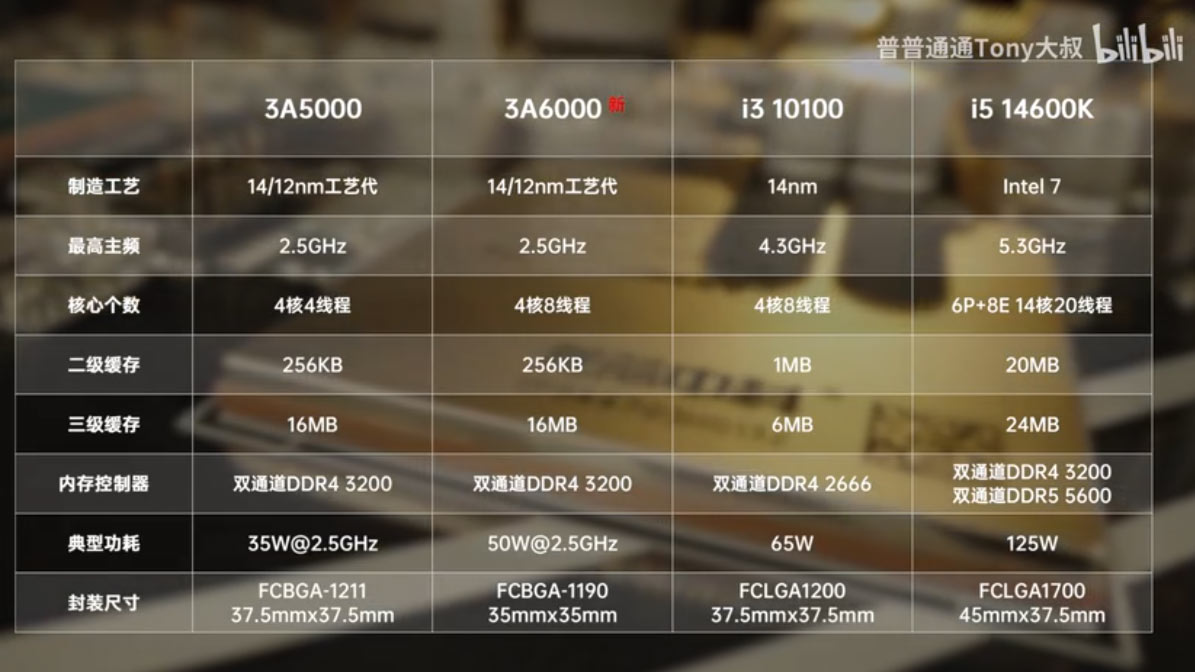New Chinese Loongson chip matches Intel's 14600K in IPC tests, overclocked to 3 GHz with liquid nitrogen
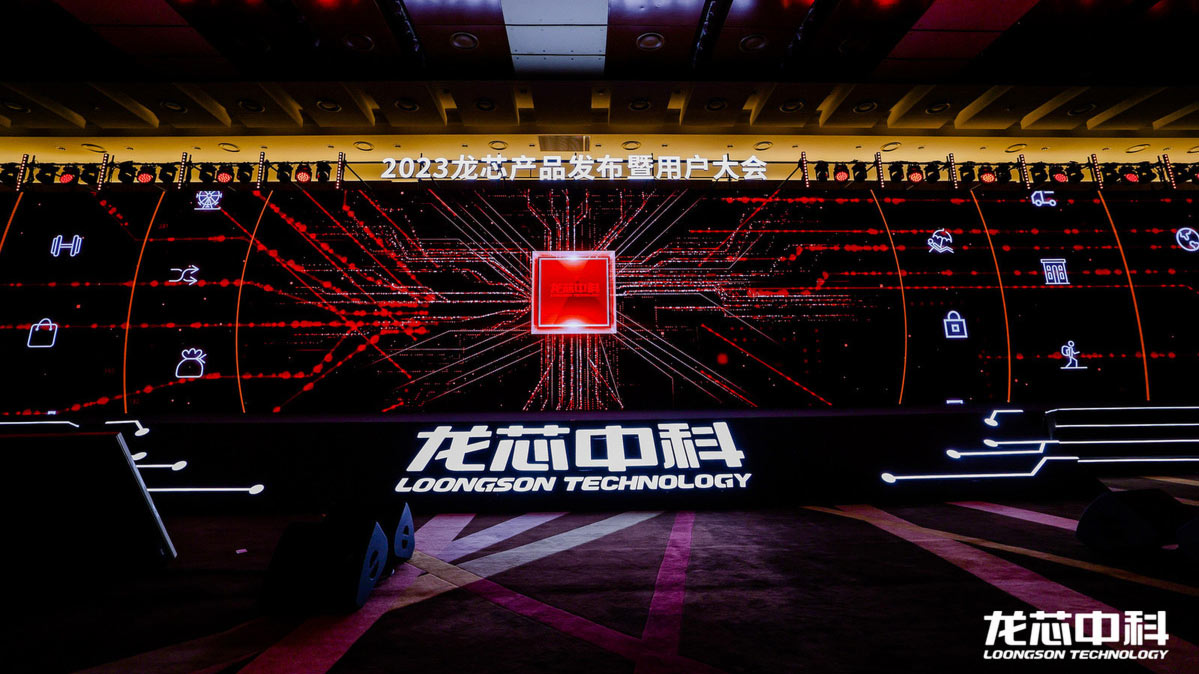
Chinese chip designer Loongson has finally launched its loong teased "next-generation" 3A6000-series processors based on the LoongArch microarchitecture. IPC tests showed the 3A6000 matching Intel's Raptor Lake i5-14600K in IPC (instructions per clock), with both chips clocked at 2.5GHz.
As well as the headlining x86 compatible processor came the announcement of numerous partner desktop, laptop, and all-in-one machines — plus a consumer-grade motherboard from Asus. It was also entertaining to see a recorded overclocking session, which took an LN2-cooled 3A6000 chip to the current maximum 3 GHz.
Starting with the basics, the Loongson 3A6000 desktop processor is fabricated using a 14 / 12nm process and features a 4-core/8-thread configuration. It runs at clock speeds from 2.0 to 2.5 GHz, consuming up to 50W. According to the chip designer, this new CPU has 256KB of L2 cache and 16MB of L3 cache, and still only supports DDR4-3200 — like its 4C/4T predecessor, the Loongson 3A5000.
Loongson compared its new 3A6000 with Intel 10th Gen and AMD Zen 3 CPUs prior to today's official launch. It continues to make comparisons to the higher-clocked 4C/8T Intel Core i3-10100 even now. Note that the Core i3-10100F features on our list of the best budget CPUs, and it features the Comet Lake architecture that was a rehash of the Coffee Lake architecture, which itself was a refresh of the Kaby Lake and Sky Lake architectures.
Chinese TechTuber Uncle Tony took the Loongson 3A6000 desktop processor for a spin a few hours ago. In his BiliBili video, he tested a sample on the new Asus XC-LS3A6M motherboard. Apparently, the new Chinese CPU can be "easily" overclocked to 2.63 GHz on air. However, Uncle Tony pushed things further for fun, using liquid nitrogen to coax the CPU to 3.0 GHz. According to the linked ITHome report, 3.0 GHz isn’t going to be an impenetrable barrier for the 3A6000, and it says it thinks things will improve in the future and indicates that 3.0 GHz is a limit currently set in the Asus motherboard BIOS.
Regular readers probably won’t be too impressed at the performance of the out-of-the-box and overclocked Loongson 3A6000. Pre-launch we saw it was roughly on par with the Intel Core i3-10100 in SPEC CPU 2006 and UnixBench (at iso-clocks). This isn’t a trivial achievement, if Loongson is indeed achieving this with its own core IP and Dragon architecture, as it claims. Moreover, even Intel’s Core i5-14600K wasn’t significantly superior in SPEC CPU 2006, when restrained to 2.5 GHz. But IPC is only half the equation, and Intel's modern chips can clock about twice as high.
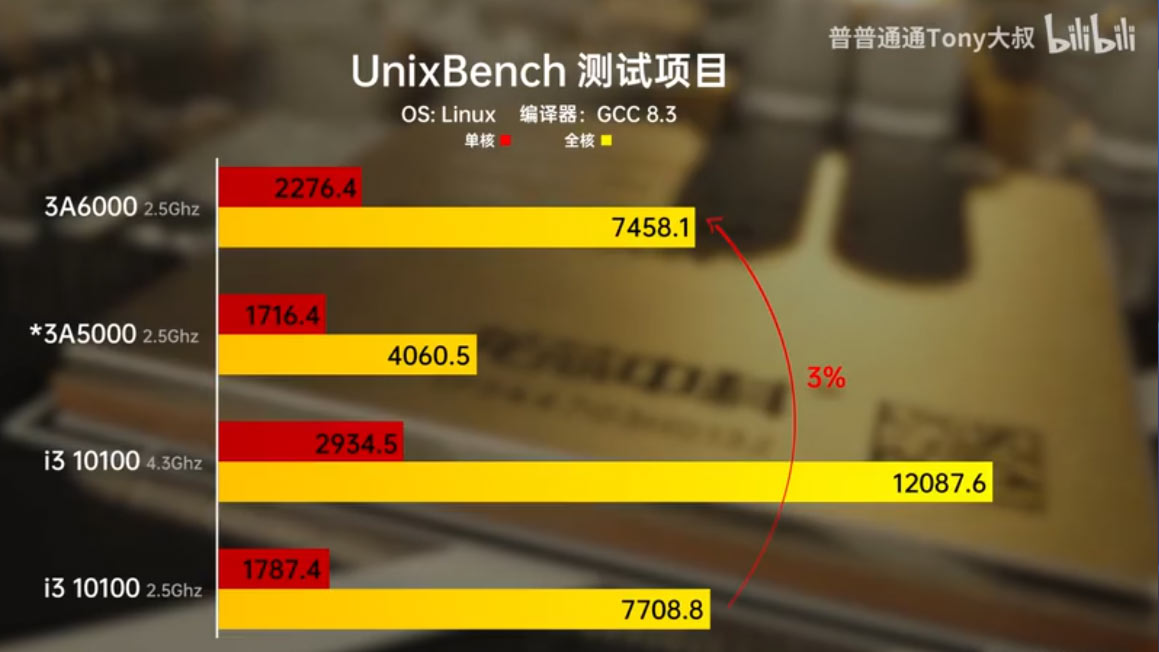
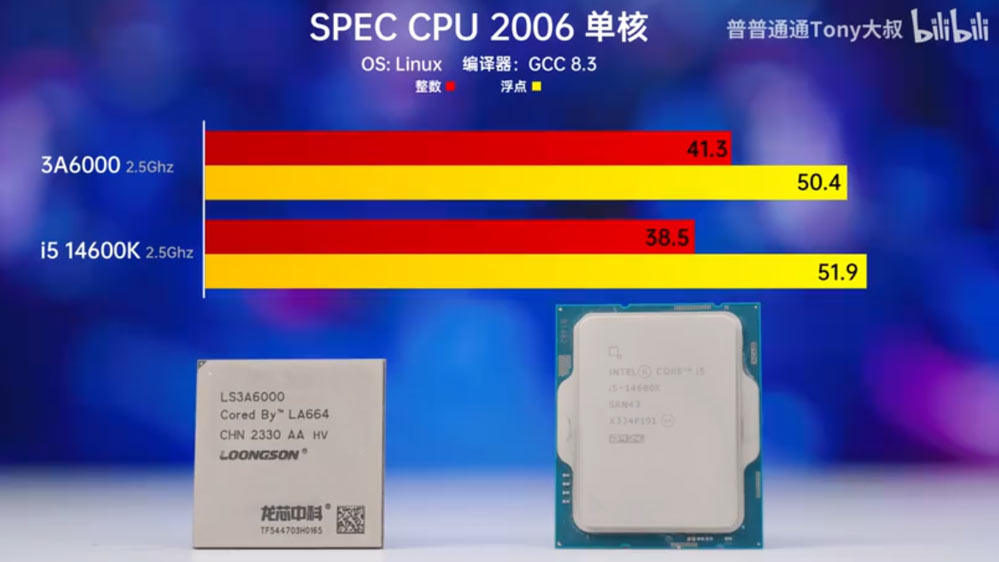
Uncle Tony confirmed a number of benchmark comparisons between the 3A6000 (and the previous gen 3A5000) vs the Intel Core i3-10100. He also highlighted some of the Asus motherboard features, and checked out a few games and apps, before starting his OC session. As mentioned above, the OC fun was muted due to a hard limit in the BIOS, but it's always quite theatrical to see plumes of LN2 vapor boiling off a CPU.
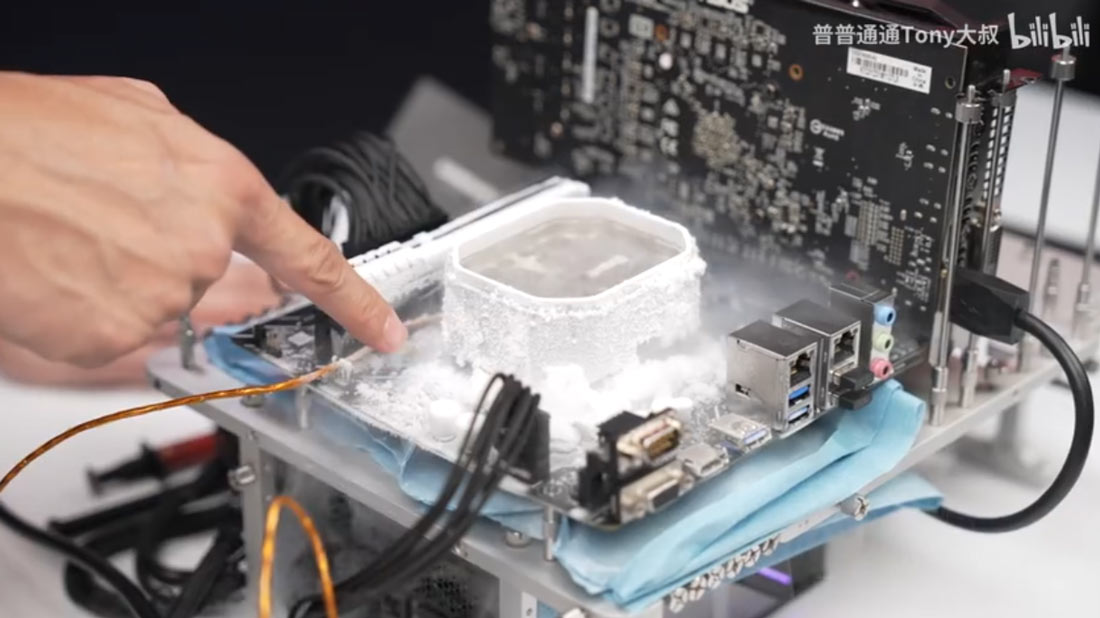
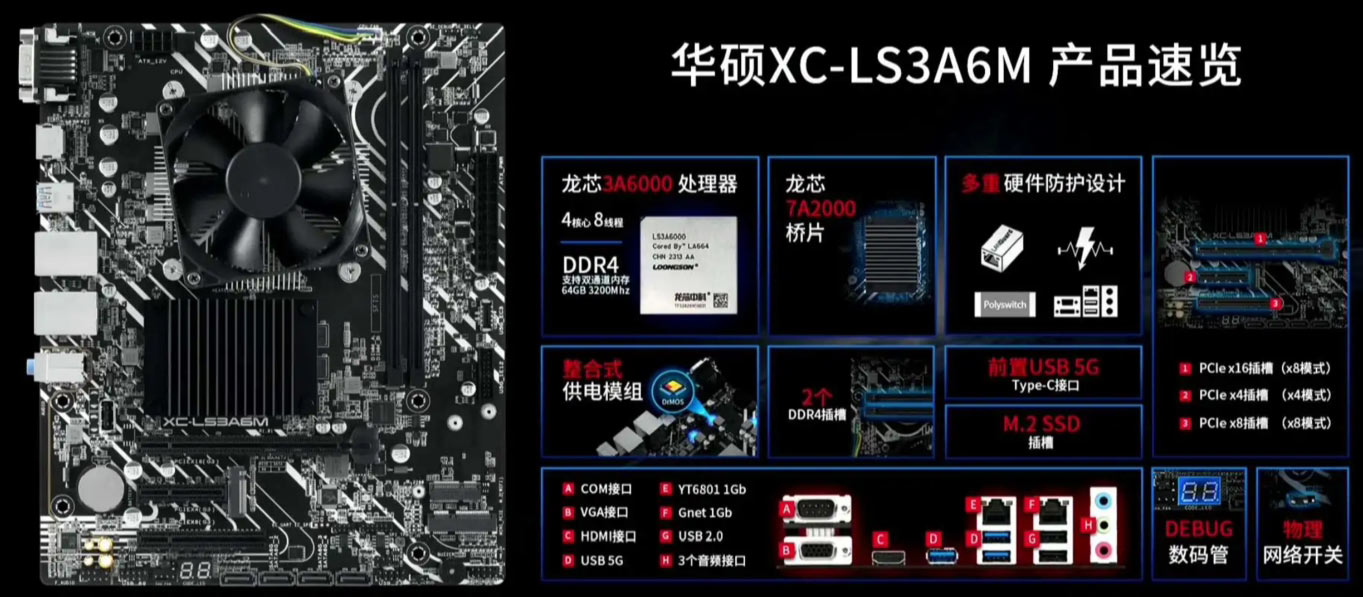
The source reports suggest that future desktop CPUs from Loongson are going to make their greatest strides by using process refinements. ITHome says China processor makers like Loonson will, in the future, “use mature processes to achieve the performance of Intel and AMD's advanced process CPUs.”
It would be fun to get a Loongson 3A6000 CPU in the lab, with a suitable motherboard. Now that it has finally launched, and with the plethora of partners announcing desktops, laptops, and AiOs, it's likely we will be able to buy some of this new Chinese hardware in the coming weeks or months — for science.
Get Tom's Hardware's best news and in-depth reviews, straight to your inbox.

Mark Tyson is a news editor at Tom's Hardware. He enjoys covering the full breadth of PC tech; from business and semiconductor design to products approaching the edge of reason.
-
bit_user Not to totally downplay this achievement, but it's not super hard to get good IPC at lower clockspeeds. That's one reason Apple typically leads on IPC - their CPUs simply don't clock as high.Reply
BTW, SPEC CPU 2006 and UnixBench are obsolete benchmarks. They were retired for good reasons, as they no longer characterize modern workloads nor stress all aspects of a CPU the way more recent benchmarks do.
It would be fun to get a Loongson 3A6000 CPU in the lab, with a suitable motherboard.
I look forward to independent Loongson benchmarks. However, given they're on the entities list, it might not be as simple as ordering from Ali Express. It'd probably be worth some research, to be sure you're not breaking any US laws. Either that, or find someone in a neutral country to test it for you.
https://www.tomshardware.com/news/us-govt-blacklists-loongson-and-inspur
BTW, it's misspelled, in the article's title. When I first heard the name, I kept wanting to write "longsoon", which is a funny name to me, but only the first "o" is the one that's doubled up. Here's a mnemonic: "son of loong". -
nookoool Replybit_user said:
BTW, SPEC CPU 2006 and UnixBench are obsolete benchmarks. They were retired for good reasons, as they no longer characterize modern workloads nor stress all aspects of a CPU the way more recent benchmarks do.
They actually was a spec 2017 benchmark numbers at the presentation. Link below
SPEC 2017 IMG -
bit_user Reply
Okay, thanks for pointing that out. I just saw the article mention the other two.nookoool said:They actually was a spec 2017 benchmark numbers at the presentation. Link below
SPEC 2017 IMG
Here's the image, for the benefit of others:
So, it's not quite as favorable as the others, but still similar.
BTW, the 'Stream' benchmark (also pictured) is a simple HPC test that stresses the cache & memory subsystem. -
gfg Reply
Apple Processors have better IPC than AMD and Intel and also better overall single-thread performance, the M3 line at 4.05 Ghz demonstrates this. So there's nothing easy about it, otherwise ARM with its X4 family of processors would be in the fight. Look, Qualcomm, just with the purchase of Nuvia, is approaching a similar Monocore performance with its latest family for laptops.bit_user said:Not to totally downplay this achievement, but it's not super hard to get good IPC at lower clockspeeds. That's one reason Apple typically leads on IPC - their CPUs simply don't clock as high.
BTW, SPEC CPU 2006 and UnixBench are obsolete benchmarks. They were retired for good reasons, as they no longer characterize modern workloads nor stress all aspects of a CPU the way more recent benchmarks do.
I look forward to independent Loongson benchmarks. However, given they're on the entities list, it might not be as simple as ordering from Ali Express. It'd probably be worth some research, to be sure you're not breaking any US laws. Either that, or find someone in a neutral country to test it for you.
https://www.tomshardware.com/news/us-govt-blacklists-loongson-and-inspur
BTW, it's misspelled, in the article's title. When I first heard the name, I kept wanting to write "longsoon", which is a funny name to me, but only the first "o" is the one that's doubled up. Here's a mnemonic: "son of loong". -
bit_user Reply
My point was that it's easier to achieve high IPC in CPUs not designed to clock as high. That's because your critical path is longer, for a lower-clocking design. With a longer critical path, you can do more work per cycle, enabling shorter pipelines, with more complex stages, and enabling instructions to have lower latencies.gfg said:Apple Processors have better IPC than AMD and Intel and also better overall single-thread performance, the M3 line at 4.05 Ghz demonstrates this. So there's nothing easy about it,
Are there any ARM Cortex-X4 cores in shipping devices? If so, have they been independently benchmarked? Cortex-X4 cores are supposedly 10-way decode and I'd indeed be very interested in seeing how they compare.gfg said:otherwise ARM with its X4 family of processors would be in the fight. -
gfg Qualcomm Snapdragon 8 Generación 3Reply
jsh7I4E2k2UView: https://www.youtube.com/watch?v=jsh7I4E2k2U
https://www.androidauthority.com/snapdragon-8-gen-3-benchmarks-3379534/
https://www.gsmarena.com/here_are_the_qualcomm_snapdragon_8_gen_3_benchmarks-news-60373.php
Qualcomm Snapdragon X Elite
https://www.anandtech.com/show/21112/qualcomm-snapdragon-x-elite-performance-preview-a-first-look-at-whats-to-come -
bit_user Replygfg said:Qualcomm Snapdragon 8 Generación 3
https://www.androidauthority.com/snapdragon-8-gen-3-benchmarks-3379534/
Thanks. There's a more recent article, as well:
https://www.androidauthority.com/snapdragon-8-gen-3-vs-apple-a17-pro-3383666/
One thing to note is that the A17 Pro has a node advantage, being made on TSMC N3B, while the Snapdragon 8 Gen 3 is made on N4P. It's a bigger difference than it sounds like, since N4 is a derivative of N5. Still, the Snapdragon's single-thread GB6 performance of 2319 isn't even a match for the A16 Bionic's figure of 2506, and that's made on N4. That gives it 92.5% of the performance of the last Apple SoC to be made on a similar node, which I think is a narrower gap than we usually see.
That's a little disappointing, but not too surprising. I wonder how the amounts of cache compares between them and how much of the discrepancy that accounts for. Apple is known for using generous amounts of cache. -
nookoool Just to give people an idea of cost, they were selling early adopter boards which had 3a6000 cpu+motherboard for around 1500 rmb or 210$ ish on the Chinese sites like JD. Unfortunately, you may need a Chinese phone number to access some mainland sites. There were greedy resellers on aliexpress trying to get 1000$+ for a 3a5000 desktop system at one point from some unsuspecting international testers/hobbyist.Reply -
artk2219 Reply
Its a funny thing when people compare Apple's IPC to AMD and Intel, yes its better in certain aspects, but at the same time it doesn't matter, the only way to take advantage of it is to buy a mac. Apple will never sell these chips to anyone else as it would potentially reopen the door to clones, which they absolutely hated once Jobs came back on board. So if you were already on Mac OS, great you have a great option, if you weren't, are you really going to redo your entire workflow for a generally relatively minor improvement? I like Apples architectures because they show the potential of what ARM can be if the proper resources get thrown at the problem, its just a shame no one else will be able to put those chips to use.gfg said:Apple Processors have better IPC than AMD and Intel and also better overall single-thread performance, the M3 line at 4.05 Ghz demonstrates this. So there's nothing easy about it, otherwise ARM with its X4 family of processors would be in the fight. Look, Qualcomm, just with the purchase of Nuvia, is approaching a similar Monocore performance with its latest family for laptops. -
bit_user Reply
Two reasons it matters:artk2219 said:Its a funny thing when people compare Apple's IPC to AMD and Intel, yes its better in certain aspects, but at the same time it doesn't matter, the only way to take advantage of it is to buy a mac.
It will sway some who are on the fence about switching to Mac.
It shows what's possible, at least with ARM ISA.
Some will. I know two developers who grew up on Windows & Linux and switched to Macs, a long time ago (pre-ARM). I don't know any executives, but that's another set of users who value something light, powerful, and with excellent battery life.artk2219 said:if you were already on Mac OS, great you have a great option, if you weren't, are you really going to redo your entire workflow for a generally relatively minor improvement?
Also, consider kids who have never used anything but Chromebooks. When they get old enough, they might want a more powerful machine and Macs would have a roughly equal draw for them as Windows.
It keeps the pressure on ARM and Qualcomm to make ever better cores, themselves. With AMD and Nvidia rumored to be working on their own ARM-based CPUs, things should get really interesting in 2025!artk2219 said:I like Apples architectures because they show the potential of what ARM can be if the proper resources get thrown at the problem, its just a shame no one else will be able to put those chips to use.
